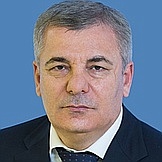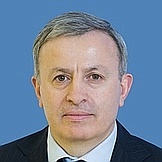Regional flags and emblems


PROFILE
Established 1 September 1921 as the Kabardian Autonomous Region; from 1957, the Kabardino-Balkarian Autonomous Soviet Socialist Republic; from 1991, the Kabardino-Balkarian Soviet Socialist Republic; from 1992, the Kabardino-Balkarian Republic.
Capital Nalchik
The Kabardino-Balkarian Republic is part of the North Caucasus Federal District
Area 12,500 sq km
Population 908 100 (2025)
Ethnic groups
(2020 National Census, %):
Kabardian – 57,06
Russian – 19,84
Balkar – 13,72
Circassian – 3,01
Turk – 1,91
Other – 4,46
Administrative divisions (2024)
Municipal districts – 10
Municipalities – 3
Rural towns – 7
Rural districts – 112
Geography and climate
The Kabardino-Balkarian Republic sprawls across the northern slopes of the central part of the Greater Caucasus Range and the adjacent Kabardian plain.
The republic borders on three Russian entities – the Republic of North Ossetia-Alania, the Karachayevo-Circassian Republic and the Stavropol Territory, as well the Republic of Georgia.
Terrain: arid plains and semi-deserts in the north; foothill valleys, sub-alpine meadows and snow-capped mountains in the south. Mountains occupy half of the republic. Mount Elbrus (5,642 m), which is Europe's highest peak, is located in the republic.
The republic has more than 140 rivers and springs in the Terek and Kuma basins, as well as the Malka-Kura, Baksan-Malka and Maly Kabardinsky canals.
The climate ranges from continental in the lowlands and foothills to sub-alpine and subarctic in the mountains. January temperatures average between –4°С (lowlands) and –11°С (highlands), July temperatures average between +23°C and +4°С, respectively.
There are two specially protected natural areas: the Kabardino-Balkarsky State High-Mountain Nature Reserve and the Prielbrusye National Park. The republic boasts unique natural attractions: cascade waterfalls in the Chegem Canyon, the Blue Lakes, caves and karst in the Malka Canyon.
Government
The legislative branch is represented by the Parliament of the Kabardino-Balkarian Republic, which is the representative and legislative state authority in the republic.
The Parliament of the Kabardino-Balkarian Republic has 70 deputies elected for five years in the single electoral district.
The current Parliament of the Kabardino-Balkarian Republic was elected in September 2024. Its term expires in September 2029.
Executive power in the Kabardino-Balkarian Republic is exercised by the Head of the Kabardino-Balkarian Republic, the Government of the Kabardino-Balkarian Republic, and other executive bodies of state power of the republic.
The Head of the Kabardino-Balkarian Republic is the republic’s highest-ranking official, who runs the executive branch in the Kabardino-Balkarian Republic, ensures coordination of the executive bodies activities with others bodies of state power in the republic. The Parliament of the Kabardino-Balkarian Republic elects the Head of the Republic for a five-year term. The term of the current Head of the Republic expires in October 2029.
The Government of the Kabardino-Balkarian Republic is the supreme permanent executive body of state power of the republic. It reports to the Head of the Kabardino-Balkarian Republic who appoints the Prime Minister of the Kabardino-Balkarian Republic with the consent of the Parliament of the Kabardino-Balkarian Republic.
Economy and natural resources
The Kabardino-Balkarian Republic has a multi-sector economy with well-developed agriculture and industry.
Manufacturing industries, agriculture and wholesale and retail trade account for the major part of the regional GDP and tax revenue.
The industrial output accounts for more than 11% of the republic's GDP. Manufacturing prevail in the industrial sector (around 80% of all locally produced goods, works and services). The food industry, mechanical engineering, metal processing, the construction materials industry and power engineering are the main industries in the region. The food industry remains an important sector of the economy and is represented by the production of spirits, wine making and the.
Main machine building and metal processing enterprises are located in Nalchik, Prokhladny, Terek, Baksan and Maisky: Kavkazkabel Cable Plant, Sevkavrentgen-D, TEREKALMAZ, ElektroProservice, Gidrometallurg, the Nalchik Machine Building Plant.
Electricity, gas and water are produced and distributed by hydroelectric power stations (Aushiger, Kashkhatau and Baksan hydroelectric power stations), thermal power stations and combined heat and power stations. Energy deficit makes it expedient to build a cascade of smaller hydroelectric power stations on mountain rivers and use alternative energy sources (solar energy, geothermal energy and bioenergy).
Consumer goods production, the construction materials industry, wood processing, chemical production and the non-ferrous metal industry are also developed in the republic.
To promote the development of infrastructure and support for medium and small businesses, the region has established three business incubators: the Kabardino-Balkarian Business Incubator, a state institution in Nalchik, and two municipal office business incubators in the urban district of Prokhladny and the Baksan District. These institutions support new small and medium-sized ventures by providing them with office space and production facilities.
Agriculture accounts for about 17% of the regional GDP.
The local environment and climate are favourable for farming. The republic specialises in livestock breeding, sheep breeding, horticulture and vegetable farming. Horse breeding is also highly developed.
The main branches of agriculture are crop production (wheat, corn, millet), the growing of sunflower, fruits, vegetables and potatoes, as well as the dairy and beef production.
Carpet making is a common occupation in mountain areas. Local carpets are famous far beyond the republic.
A recreation complex based on medicinal mineral springs and unique nature forms an essential part of the republic's economic potential.
Culture and tourism
The Kabardino-Balkarian Republic is a popular tourist destination, offering fantastic opportunities for mountaineering and Alpine skiing. Local pistes are as good as world-famous ski runs at West European resorts and in many respects even surpass them.
Prielbrusye, or the foothills of Mount Elbrus (5,642 m), the crown pearl of the Caucasus, is Kabardino-Balkaria’s visiting card. This amazing area with its majestic snow-capped peaks, picturesque canyons, numerous waterfalls and a gentle mountain climate is a national park that combines virtually all landscape and climatic zones existing in Russia. Another popular tourist attraction is Dzhily Su, famous for its medicinal sparkling, thermal and mineral springs.
Kabardino-Balkaria has been successfully developing its recreation and tourism industry for more than 80 years. The Nalchik resort centre boasts a variety of spa waters (iodide-bromine, nitric thermal, sulphurous, mineral). Lake Tambukan supplies all of the republic’s health and recreation centres with medicinal mud.
Ethnic and cultural traditions are carefully preserved and developed thanks to local museums. The republic has more than 500 cultural heritage monuments of federal, regional and local significance. Popular historical sites include the Nalchik Burial Ground (second half of the 2nd century BC), the Agubek settlement (early 3rd century BC) and the Dolinskoye settlement (2nd century BC).
_________________________________________________________________


